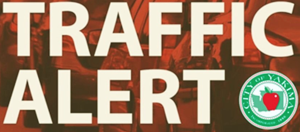
YAKIMA, Wash.- The long-established history of Japanese American in the Yakima Valley is the focal point of a new exhibit at the Yakima Valley Museum.
The Land of Joy and Sorrow is a permanent exhibit at the museum that tackles the lives and hardships of settlers who chose to lay roots in the Yakima Valley around the time of the World Wars.
Many families settled in the Lower Valley in the Wapato-Toppenish area where they started their homes, farms and communities. Flushed with household items and farming equipment that would have been found in the settlers’ homes, Director of Development at the Yakima Valley Museum, Larissa Knopp, says the display highlights the communities the settlers established in Washington.
“They made a community here and we still have a community here,” said Knopp. “It packs a punch emotionally because these are our neighbors’ stories.
It was in 1942 when Yakima Valley’s Japanese immigrants were forced into relocation camps, along with immigrants across the country. President Franklin Roosevelt’s Executive Order 9066 uprooted the communities to put them into camps.
For most from the valley, they were taken to the Heart Mountain camp in Wyoming. The camp hosted around 10,000 people for three years until they were released at the end of the war.
For many of the immigrants taken from the Lower Yakima Valley, they had nothing to return to. The farms, businesses and homes they established had been sold to other parties leaving them with nothing. The Yakima Valley Museum reports less than 10% returned to the Yakima Valley after the camps.
“it just shows the perseverance of the Japanese community,” said Knopp. “A terrible thing happened to them. It’s a traumatic event, and yet somehow, through that, you still have them building community.”
As many were forced to relocate before coming back, a kiosk is available to follow all the immigrants who came to the Toppenish-Wapato area. The system provides information on every person involved including details about the relocation.
“You can see where they were moved to, so a lot of them were transported through Portland to the camp and then also you can see where they were in the camp,” said Knopp. “You can see who was there with them, when they entered when they left, so it gives you a lot more information. It’s a primary source you’re able to flip through a kiosk.”
The Land of Joy and Sorrow exhibit is a permanent piece at the Yakima Valley Museum, open Tuesday through Saturday from 10 a.m. to 5 p.m.



